Plantar fasciitis is a significant cause of plantar heel pain among runners and non-runners alike and is also a major cause of general foot pain. Plantar fasciitis affects both passive and active individuals.
The most common type of plantar fasciitis has a gradual onset, caused by poor foot or lower limb biomechanics. Although plantar fasciitis can occur at any age, the inflammation worsens as we age, and our tissues lose elasticity and strength.
This makes sense, given that the risk of developing plantar fasciitis is most significant between 40 and 60 years of age.
What is plantar fasciitis?
The plantar fascia is a thick band of connective tissue that runs from the heel bone to the base of the toes and supports the foot arch. Plantar fasciitis is a common overuse injury that causes swelling of the plantar fascia at its attachment site on the heel bone.
Inflammation can occur primarily at the point where the tendon connects to the heel. Repetitive stretching or tearing, which can cause irritation and inflammation, is one of the most common causes.
The heel is a part of the body designed to absorb impact when you bear weight. If pain develops, it can be extremely debilitating, making even standing or walking difficult.
Common causes of plantar fasciitis
- Plantar fascia injury can be either acute or chronic. While acute plantar fascia tears can occur in runners, most cases result from progressive and prolonged overload and strain.
- Standing for extended periods.
- Defective footwear.
- Exercising regularly by dancing, walking, or running.
- Improper foot positioning or overpronation.
- Overtraining.
- Having tight calf muscles.
- Weak stabilising muscles of the hip and lower limb.
- Being overweight.
- Having a high arch height.
- Improper biomechanics of the foot or lower limb.
Common symptoms of plantar fasciitis
The pain is usually worse in the morning, with the first few steps being particularly painful. High impact weight-bearing activities, such as running or jumping, aggravate the pain. The pain is usually restricted to the inside boundary of the heel. Typically the inflammation gets worse over time, as does the intensity of the pain.
Other signs and symptoms may include:
- Cramps in the feet.
- Restricted range of motion.
- A tingling sensation or pins and needles in the feet.
- Gait issues.
Can a physiotherapist help with plantar fasciitis?
Plantar fasciitis treatment with physiotherapy is highly effective. Plantar fasciitis treatment is similar to tendon pain management. This includes treating the initial symptoms before gradually loading soft tissues to promote strengthening and prevent recurrence.
Physiotherapy treatment for plantar fasciitis
Plantar fasciitis can be diagnosed and treated with physiotherapy. A definitive diagnosis is required to ensure a positive outcome. Treatment is primarily determined by what is discovered during your assessment; however, a combined approach is generally utilised. Dry needling of the calf muscles and plantar fascia, soft tissue massage, trigger point therapy or mobilisations of foot and ankle joints, and supportive taping of the foot may be used in treatment to relieve pressure on the foot arch (plantar fascia).
Our physiotherapists will also provide a rehabilitation program of stretches and strength exercises and refer you to our in house podiatrists for an orthotics assessment if required.

How long does it take to heal plantar fasciitis with physiotherapy?
Using physiotherapy treatments, most people with plantar fasciitis can see improvements within a few weeks or months. The majority of people will be fully recovered in 7-9 months. The key to effective plantar fasciitis treatment is determining the stage of recovery the condition is in and tailoring treatment to encourage repair.
Physiotherapy treatment effectively relieves the pain of plantar fasciitis, and the sooner we can provide treatment, the sooner we can relieve your pain.
How do I permanently get rid of plantar fasciitis?
- Get evaluated by an experienced physiotherapist and start a treatment plan.
- Reduce strain on the tissue as needed, and allow enough time to heal between strenuous activities or treatments.
- Examine your footwear to ensure that it provides adequate support.
- If your case requires it, consider adding orthotic support and shockwave therapy.
- Determine the strength and mobility deficits that put extra strain on the fascia and make sure your physiotherapy plan addresses them.
- If you take the ailment seriously and stick to your treatment plan, you will be able to get rid of your plantar fasciitis permanently.
Final thoughts
Plantar fasciitis can be effectively treated with physiotherapy; you should not expect the pain to go away on its own. This injury is frequently overlooked because it warms up as you exercise. However, every time you put weight on it, it gets more inflamed.
As your condition worsens, the pain will not subside, your injury will be far more challenging to treat, and your response to treatment may take longer.









